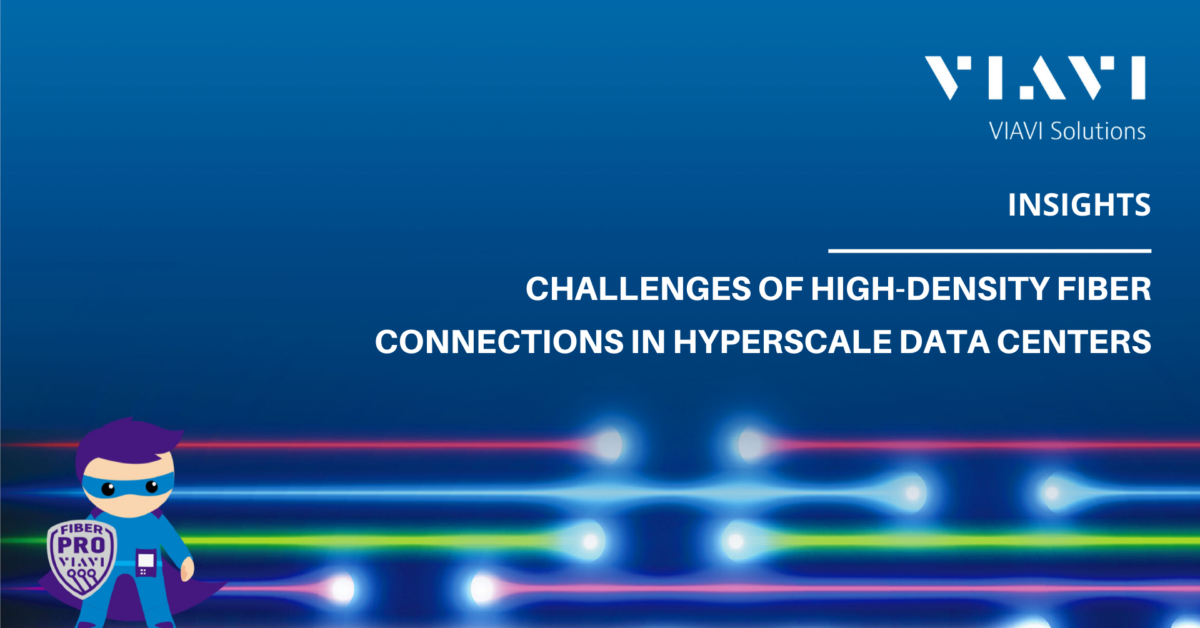When faced with validating and resolving a performance problem with a complex application, we need complete visibility into how the various components of the application are performing. The way most vendors approach this need is to deliver Key Performance Indicators (KPIs) that describe how each of the various elements of the system is performing. Having […]
Tag Archives network performance
In an ideal world, all installations are flawless, and construction and commissioning should feel like plug-and-play with no need to test any of the network components or the cables that connect them. However, in the real world, we routinely encounter errors during installation projects, such as defective or damaged components, untrained or inexperienced installers, and […]
In 2020, experts estimate that there are at least 31 billion IoT-connected devices worldwide. These devices rely on 5G connection to function properly and thus, perhaps now more than ever, there is a huge demand for 5G-ready telecom engineers and fiber contractors. In fact, research conducted by IHS Markit has predicted that by the year […]
The demand for fast, flawless network connectivity continues to expand across the globe as our world becomes increasingly digitally interconnected. High-speed 4G and 5G networks provide instant access to data-intensive apps, games and videos on billions of devices across the world, while the Internet of Things (IoT) allows them to seamlessly interact with one another. […]
In a data center environment, there are several key considerations that go into whether to deploy a multimode fiber, short-wavelength or a single mode-fiber-based, long-wavelength optical network. As they continue to drive critical business processes with fiber-optic connectivity as their backbone to allow connection with link servers, storage systems, and switches, both data centers and […]
The Passive Optical Network (PON) is a telecommunication technology that is used to implement a point-to-multipoint architecture. In order to enable a single optical fiber, the system uses fiber optic combiners and splitters, which is then used to serve multiple end-users without the need for individual fibers between customers and the hub. The coverage range […]
The road moving forward to 5G is unpredicted for wireless networks. 5G technology has the capability to open incomparable possibilities to input creativity out into society through generating integrated infrastructure that obtains the ability to fasten buildings, transport and utilities. Along with 5G, there are significant opportunities for improvements within operations in society, including transport, […]
Entering into a new decade, brings new key trends across cloud data centres, servers and network connectivity, shaping the server market from the cloud as well as the edge. With these trends brings the ability for organisations to preserve the control of sensitive data whilst managing soaring demands regarding capacity as well as consumer computing […]
With 5G becoming more and more readily available, a number of industries are set to be positively impacted, primarily due to 5G’s low latency and high speed characteristics. The following are the top five industries which are set to experience major developments as 5G continues to be deployed. Transportation Transportation has already seen major […]
All-optic networks provide network capacity within the Photonic Domain. The Photonic Domain involves the use of radiant energy with photon as its fundamental element. Likewise, as electronic applications use electrons, the Photonic uses the photon. The intelligent all-optic networks are redefining the optical industry, in fact, it is re-shaping the future. An all-optic network […]










